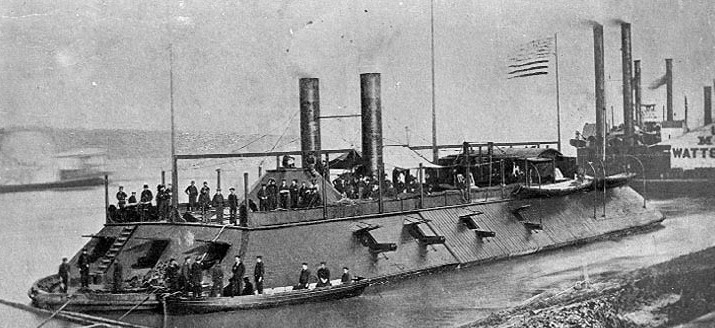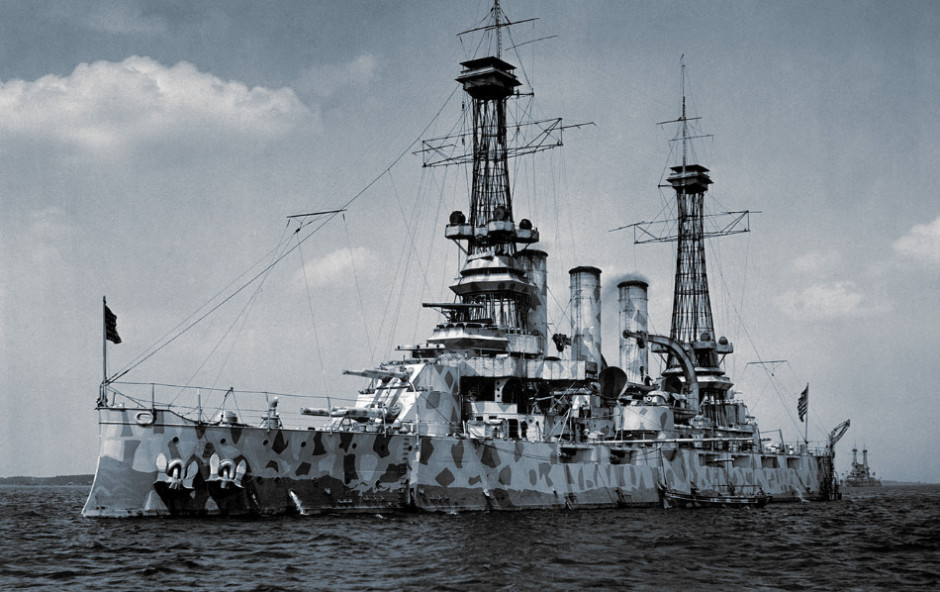Battleships were large surface warships of well over 10,000 tons with a main battery of heavy guns. In their day battleships were the most powerful type of warship afloat and center-pieces of all major blue-water navies. Battleships came into being in the 1870s as a successor generation to the ironclad warships and turreted Monitors of the mid-1800s. In 1906 there was a watershed moment when the most powerful navy of the day, the Royal Navy, launched a battleship which eclipsed all others by such a margin that conventional wisdom changed overnight. HMS Dreadnought was faster, bigger and much more heavily armed than any warship before her and set the scene for forty years. The last battleships were built in WW2 when they were already being eclipsed by the aircraft carrier. After the war only Britain, France and US could afford to keep any battleships at all. The Royal Nay's HMS Vanguard was decommissioned in 1960, the French Navy's Richelieu was retired in 1967 and the last of the US Navy's Iowa Class battleships were finally retired in 1992.
One hundred years after Dreadnought, the USS Zumwalt (DDG-1000) restarts history.
Zumwalt is categorized as a Destroyer but since when has that counted for anything(?). If she performs as expected it will be a Dreadnought moment with all other large surface warships rendered, in design terms, obsolete. But more interesting to the casual observer is the fact that her shaping, designed to deflect radar signals, harks back to 1800s US Navy warship design. In looks as well as spirit the USS Zumwalt is a fitting 21st century successor to the Ironclads, monitors and pre-dreadnought battleships of the 1800s. Her 'tumblehome' hull slopes the opposite way to regular ships and her tall sloping structure is reminiscent of the ironclad warships of the Civil War.

 USS Zumwalt
USS Zumwalt

USS Cairo, Civil War ironclad with sloping superstructure
Zumwalt's main armament of two 155mm guns may appear puny in comparison to the Iwoa Class' nine 406mm (16") guns but in a gun dual there'd be no question: they have a range of 83nm compared to Iowa's 20nm. And in terms of accuracy there is of course again no comparison. Zumwalt also packs 80 vertical launch models which can be loaded with a Tomahawk land attack cruise missile which has a range of over 1,000 miles. Loads will vary with mixes of Tomahawks, Standard Area-Air-Defense missiles, ESSM medium-ranged Air-Defense missiles and ASROC anti-submarine missiles.
Comparisons with the mighty 45,000 ton Iowa Class are not as interesting as comparisons with the older pre-dreadnoughts of the US Navy. Zumwalt displaces about 14,600 tons, which is almost the same as the USS Virginia Class battleships launched almost exactly 100 years before her.
The Virginias were he last of the pre-Dreadnoughts and featured the distinctive tumblehome hull. Their main batteries were four 12" (305mm) guns mounted in two twin turrets, one fore and one aft. Superimposed on each main turret was a second turret with two 8" (203mm) guns. This arrangement was distinctive of US Navy battleships of the time.

 Virginia Class battleships. Note the refitted masts in the photo
Virginia Class battleships. Note the refitted masts in the photo
There is a common perception that modern warships are smaller than battleships. This is certainly true of the mammoth Iowa class, rivalled only by aircraft carriers today. But Zumwalt is much larger than one might imagine and deserves the loose description of a battleship. Placed side-by-side, the Zumwalt is larger than the Virginas, making her literally as large as a battleship.
 USS Virginia superimposed on USS Zumwalt
USS Virginia superimposed on USS Zumwalt
Zumwalt may be termed a 'destroyer' for political purposes but she is, in spirit at least, a battleship. And that maybe no bad thing. Let's hope that the Zumwalts live up to promises and that the press, accountants and congress can keep any teething problems in perspective.
